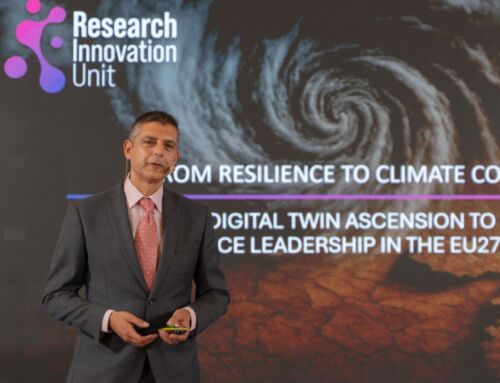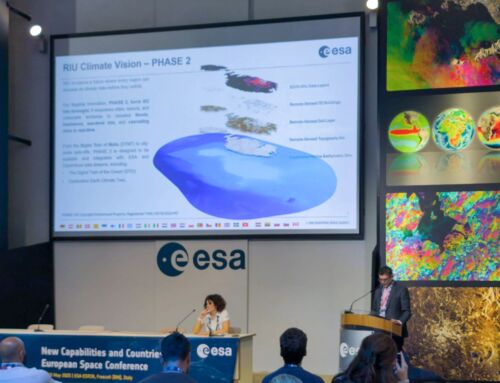The global push towards net-zero emissions has thrown the transportation sector into intense innovation and transformation. Vehicle manufacturers, particularly those producing land vehicles, are at a crossroads, experimenting with various alternative fuels and propulsion systems. While electric vehicles (EVs) have made significant strides in recent years, the future of sustainable transport is more complex, with hydrogen, synthetic fuels, and other innovations poised to play crucial roles. Yet, the sector still faces a critical challenge: the lack of a universally accepted standard for alternative fuels. This editorial explores the ongoing research and technological breakthroughs by vehicle manufacturers. It delves into the role of global standards in shaping the future of transportation.
The Electrification Revolution: Hybrid and Electric Vehicles
Electric vehicles (EVs) are often seen as the frontrunners in decarbonising transport. In 2023, global EV sales reached an estimated 14 million, accounting for nearly 10% of all passenger vehicles sold worldwide, primarily driven by the European, US, and Chinese markets. EVs, particularly battery electric vehicles (BEVs), produce zero tailpipe emissions and can significantly reduce greenhouse gas (GHG) emissions over their lifecycle when powered by renewable electricity.
Despite their advantages, BEVs are not without limitations. The environmental impact of battery production, particularly the extraction of lithium and other rare minerals, and the high energy demand during manufacturing can offset some emissions reductions achieved during vehicle use. Moreover, the availability of charging infrastructure remains a barrier, especially in less developed regions. Furthermore, the carbon intensity of the electrical grid can influence the overall emissions of BEVs, as countries with fossil fuel-heavy grids may not reap the full benefits of electrification.
In contrast, hybrid vehicles offer an intermediary solution. Plug-in hybrid electric vehicles (PHEVs) combine internal combustion engines (ICEs) with electric motors, allowing for partial electrification while mitigating the range anxiety associated with BEVs. However, critics argue that hybrids are merely a transitional technology, and their dual-engine configuration complicates the push for full electrification.
Hydrogen Fuel Cell Vehicles: A Viable Complement?
While EVs continue to gain momentum, hydrogen fuel cell vehicles (FCEVs) represent a promising alternative for specific segments of the market, especially heavy-duty transport. FCEVs use hydrogen gas to generate electricity, emitting only water vapour as a byproduct. Their ability to refuel quickly and travel long distances makes them particularly suited for freight and commercial transport, where the long charging times of EVs can be a hindrance.
However, hydrogen production remains a challenge. Most hydrogen is produced through steam methane reforming, emitting significant GHGs. Efforts to decarbonise hydrogen production focus on “green hydrogen,” generated through water electrolysis powered by renewable energy sources like wind or solar. This method drastically reduces emissions, but the technology is still expensive and not widely available.
The automotive industry is already exploring hydrogen as a serious contender. Toyota, Hyundai, and Honda are among the manufacturers leading the development of FCEVs. Toyota’s Mirai and Hyundai’s Nexo are among the few FCEVs available on the market, albeit in limited regions. Europe and Japan are investing heavily in hydrogen infrastructure, with plans to expand refuelling stations across crucial transport corridors.
The Rise of Synthetic Fuels
Another promising development is the emergence of synthetic fuels or eFuels. These carbon-neutral alternatives are produced by capturing CO2 from the atmosphere and combining it with green hydrogen to create a fuel miming traditional petrol or diesel. In collaboration with HIF Global, Porsche has been at the forefront of eFuel development, building a pilot plant in Chile to produce synthetic gasoline and renewable methanol using wind energy.
Synthetic fuels offer a solution for decarbonising the existing fleet of ICE vehicles, which still make up most vehicles on the road. By providing a drop-in replacement for fossil fuels, eFuels allow existing infrastructure and engines to be used without significant modifications, making them an attractive option for countries with slow EV adoption. However, like green hydrogen, eFuels face challenges in terms of scalability and cost.
Alternative Technologies: Beyond EVs and Hydrogen
The race to decarbonise transport has also sparked interest in other alternative fuels, including liquid nitrogen and biofuels. Liquid nitrogen, for example, has been proposed as a zero-emission fuel for certain types of heavy-duty vehicles. The technology uses liquid nitrogen to power an engine through expansion, emitting only nitrogen gas. Although still experimental, it offers an exciting alternative for industries seeking to move away from hydrocarbons.
Biofuels, derived from organic materials such as plant waste or algae, also offer a renewable alternative to fossil fuels. Advances in biofuel production, particularly second-generation biofuels that do not compete with food production, could provide a sustainable option for sectors like aviation and shipping, where electrification is less feasible.
The Need for Global Standards
While the variety of alternative fuels presents numerous opportunities, the lack of global standards is a significant barrier to widespread adoption. Unlike petrol and diesel, which have established international standards, alternative fuels vary widely in production methods, distribution infrastructure, and vehicle compatibility. Without clear guidelines, manufacturers face uncertainty about which technologies to invest in, and consumers may hesitate to adopt new vehicles without confidence in fuel availability.
For instance, the European Union is working to develop a comprehensive regulatory framework for hydrogen, including certification schemes for green hydrogen production and distribution. Similarly, efforts are underway to establish global standards for battery recycling and disposal, as the growth of EVs raises concerns about the environmental impact of battery waste.
A Multi-Solution Future
As the transportation sector strives to achieve net-zero emissions, it is clear that no single solution will dominate the future. Instead, a combination of technologies, electric vehicles, hydrogen fuel cells, synthetic fuels, and biofuels, will likely coexist, each serving different market segments. Battery electric vehicles will continue to lead in passenger cars and short-distance transport. At the same time, hydrogen and synthetic fuels will play critical roles in heavy-duty transport and regions with limited electrification infrastructure.
Ultimately, the success of these alternative fuels will depend on coordinated global efforts to standardise production, distribution, and usage. Governments, industry, and consumers must work together to accelerate the transition to a decarbonised transport system that reduces emissions and ensures energy security and economic resilience in the face of climate change.
The crossroads of innovation presents both a challenge and an opportunity. As we forge ahead, the choices made today will shape the future of transport for decades to come.






